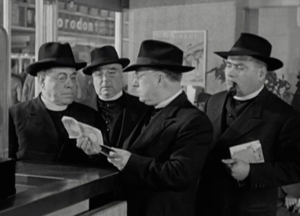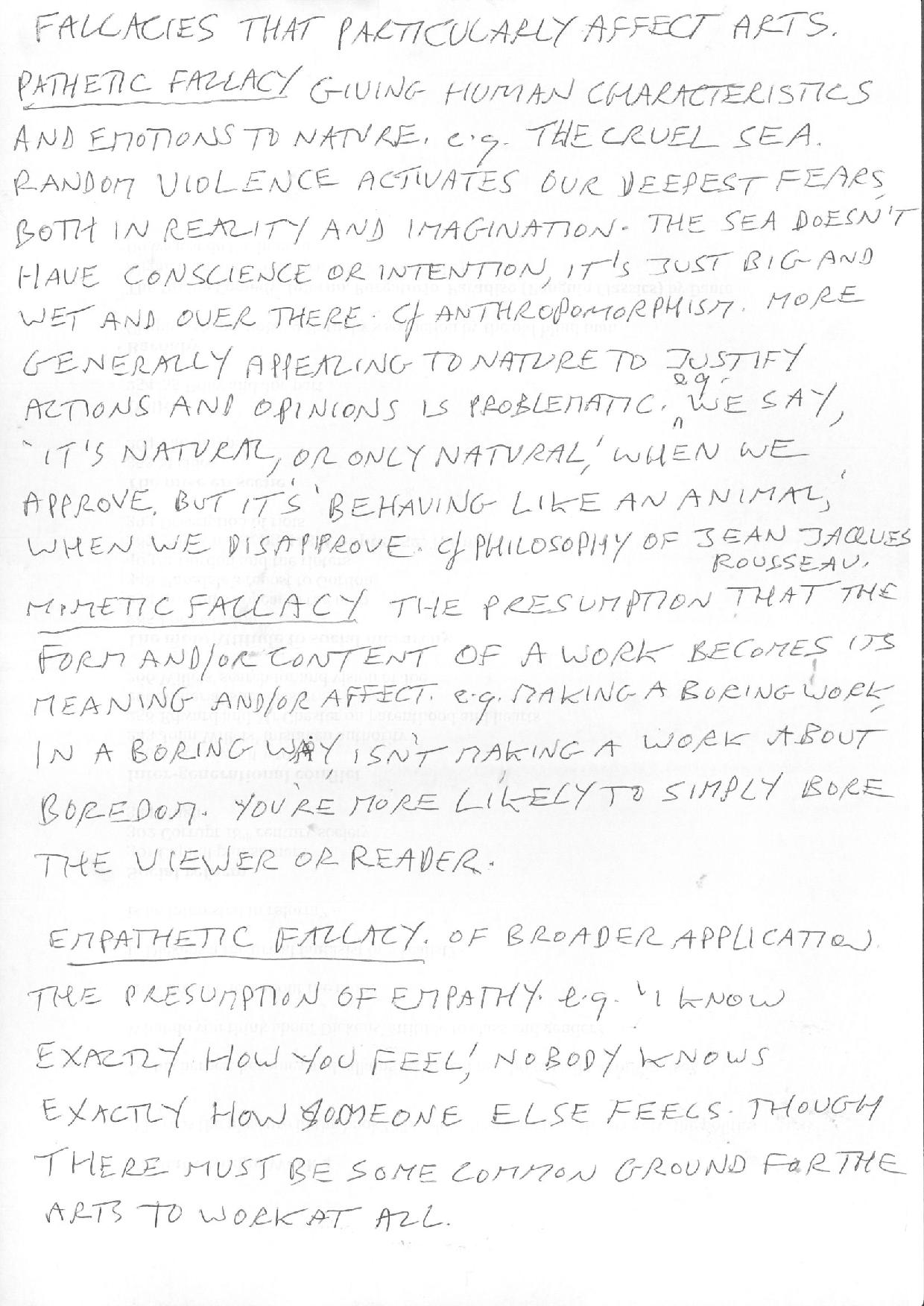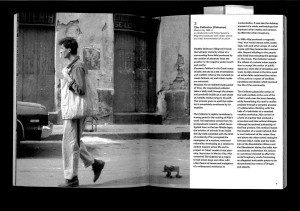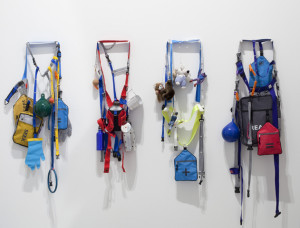Dr Libby Heaney – Noticer: Some notes
Black holes:
Overview: a black hole is a region of spacetime from which gravity prevents anything, including light, from escaping.
Formation: When dying stars collapse, (i.e. when they run out of fuel and the radiation pressure of the nuclear reactions no longer balances the gravitational force) they can end up in one of a few states. Blackholes are formed when the heaviest types of stars collapse. BH grow bigger by absorbing mass from their surroundings.
History: Idea first put froward by John Michell in 1783, but idea largely ignored because scientists not sure how a massless wave like light could be affected by gravity.
Theory: Predicted by Karl Schwarzschild using in Einstein’s theory of general relativity. All mass bends the space around them. The gravity we feel on earth is due to the fact it curves space a little. With blackholes this occurs to such an extent that it is wrapped around itself and even light cannot escape. Imagine an endless spiral. You would need more energy than there is in the universe to pull you out (i.e. you would need to travel faster than the speed of light which is impossible). In a BH mass collapses to a point – zero dimensions – known as a singularity – no atoms, no particles we would recognize.
The theory shows that the boundary of the region from which no escape is possible is called the event horizon.
Laws of physics of blackholes largely unknown as we need a theory that reconciles general relativity with quantum physics, so called ‘Theory of everything’. An area of active research – string theory/quantum gravity.
Blackholes can evaporate as was shown by Stephen Hawking.
Basically, general relativity posits that space and time are not absolute properties of the universe but rather they depend on the relative motion of an observer.
A stationary external observer would therefore witness time stop for an object that crosses the event horizon. From the point of view of an infallen observer time continues. Hence known as frozen stars as we observe a frozen surface.
Detection: Invisible interior, but their presence can be inferred by the behaviour of other mass and by the passage of light through space. Matter falling into a black hole gets heated by friction and form some of the brightest objects in the universe. There is a black hole 4.3 times bigger than the sun at the centre of our galaxy, the milky way.
Only three independent physical properties are observable from outside a blackhole: mass charge and angular momentum.
Magnetism:
Overview: Magnetism is the force exerted by magnets on other magnetic material.
Formation: – what makes something magnetic? Rotating/moving charged particles. Permanent and non-permanent magnetic material
History: Evidence for first use of magnetic materials 10000BC! Orsted first link between electricity and magnetism. Maxwell’s equations unifying theory for the fundamental force of electromagnetism.
Theory: Maxwell equations, predicted speed of light, but not the quantum effects of waves. Some people thought that the magnetic force was transferred via the ether, which has since been proven not to exist.
Detection: school – iron filings. Charges.
Unusual behaviour: Magnetic monopoles – do they exist? Quantum magnetism. Different types of magnetism.
Applications: birds use magneto receptors to navigate. Electromagnets. Electricity generation. Superconducting magnets. Levitation. Used at LCH CERN.
Summer School day 1, Monday 28 July 2014
10.15: Coffee
10.30: Introduction to Tate Learning and Summer School Research Project by Alice Walton
10.45: Who are we and what have we noticed…
This introduction acknowledges us all as experts/non experts, teachers and learners in the room – non hierarchical.
Work in pairs
Tell each other who you are
What have you noticed in the room?
Tell the rest of the group about your partner and what they noticed
Write it on the board as you speak
11.15: Summer School introduction by Natasha Kidd
Anticipating Accessories kits by Lucy Orta
These wearable artworks are related to Orta’s longstanding interest in communication and participation. Each accessory is also a kit containing different objects that symbolize a state of emergency: shortages of water or food, loss of love or affection, pollution or environmental disasters.
Taking Orta’s work as a metaphor, we are offering up a way of working with uncertainty but in a safe and certain way. Come with us…
Our methodology:
“When you start asking things, you initiate an endless process, you open up a can of worms…”
We outline a little bit about our thinking. Also see Appendix 1
The learning resource as the subject: Following on from designing the Baldessari and Boetti resources, we have become interested in inviting teachers / students in to the dialogue / research. As part of that we have established a methodology for Summer School 2014.
The live resource as the method: This week is a live resource, which is a method for harnessing the expertise of everyone involved: teachers, scientists, artists, architecture students, fine art graduates, curators, filmmakers. It is unfixed, generative, evolving, not known. We will use the grant projector / visualiser to project any images, texts and tell the story of Summer School. We want to avoid a sense of projecting “fixed knowledge” and embrace the liveness of the week.
Noticing as the concept: We will talk about noticing as a current, laying the image of the eyes live on the grant projector. We openly talk about our thinking gathering pace. Thoughts attract other thoughts and references and objects.
Blog as a record: This gathering, snowball of information has enabled us to make transparent our thinking through the planning of Summer School. And to help us begin to find our way in, we printed it. The blog has become our can of worms …
11.30: Noticing with all the Senses
Pat Thomson
Why did you choose to post what you did…
Pat unpicks the posts, using the grant projector / visualizer as method of slowing down the way a blog is experienced – digital to analogue.
12.00: Magnetism
Dr. Libby Heaney
We are particularly interested in considering noticing as having the equivalent current to magnetism. As non-experts we are curious to know more and to consider this possibility.
Dr. Heaney gives a Skype talk from New York on the formation, theory, history and application of magnetism and black holes.
12.50: A Case for blackboards
In the talk Thinking through Making Tim Ingold suggests that the artifact can’t be understood as an idea simply projected on to a material.
>excerpt from 6’:52”- 8’.21” Thinking Through Making
“When we use PowerPoint we project images on the screen; PowerPoint is the epitome of the logic of projection, which I am arguing against. The reason why I like black boards is that the black board is the epitome of the process of creativity that I am arguing for. You stand at the black board and you scrape a line. Then your movement, your awareness, the trace of the materials are all bound up in that one performance and what you see is the outcome of that performance. That’s why I like blackboards”.
12.55: P-A-U-S-E
Write the word ‘Pause’ on the visualiser.
The group has been instructed that the first person to notice the word Pause should pass it on. On receiving the instruction, each person finishes what they are doing and finds someone to tell what they have noticed on the table, in the room, in our conversations so far and the talks. This is recorded on the blackboard.
2.00: Noticer
We introduce the Noticer as an object.
The aim is to construct/consider/make a noticer: An object that gathers information, things, objects and ideas to it.
We have begun to notice objects that draw information to them
e.g. the planter seat, image of text message
Make a list as a group. What objects gather people to them?
2.20: Alexander Brodsky & Ilya Utkin
These artists take architectural, literary and visual sources and construct and depict absurd proposals for new constructions/cities. They combine architecture with fine art.
We gather in this display to consider our task. From here,we go into the collection and collect/collate visual sources/ideas about objects that attract information, ideas, people and things to them. Working in groups of 4 we draw directly from the collection/the building as a starting point.
4.10:The pitch
Back in the Clore Studio we give 4 presentations to the student architects and graduate artists on what we have found and why it is relevant.
We use the visualiser, cameras, black boards. The architects / students take notes. Working overnight, they will use these presentations to construct a series of proposals for objects that function in an equivalent way. They will consider how the noticer will include all 4 elements presented to them and think about a modular or cooperative system for drawing these elements together. These maybe impossible structures that need consideration or adaptation in day two.
4.50: S-T-O-P
The word ‘Stop’ is written on the visualiser.
The group has been instructed that the first person to notice the word Stop should pass it on. On receiving the instruction, each person finishes what they are doing and finds someone to tell about a conversation or word from the day that they can recall.
(Appendix 1) Methodology
Method of sharing information
We will use a visualiser to project texts, drawings printouts (sourced).
We will print everything from the blog and stack it as a starting point. This will enable us to reach for things and project them quickly and live. Avoiding a fixed presentation.
During the week when something is found, used and projected from a book or text we will photograph it or photocopy it to add to the stack.
Method of taking notes
The blackboard becomes a place where information about the speakers, questions that are raised and information that is offered is noted.
Method of reflecting
A Pause or a Stop will be indicated by Jo or Tash writing on of those words on the visualiser. The first person to notice this will pass on the word to the others. The group will down tools and recall and record a conversation that they have “noticed” This should be written on the black board and photographed, prompting a discussion.
Method of learning
We acknowledge all participants and contributors as experts/non experts, teachers and learners, without hierarchy.
THE COLLECTOR (FRANCIS ALYS)
Visible Science: (Magnet) A body that attracts metal by virtue of a surrounding force field produced by the motion of electrons from the positive to the negative poles (south and north).
Context: Political in the Greek sense of polis, the city as a site of sensations and conflicts whence the materials to create fictions, art and urban myths are extracted.
Process: For an indeterminate period of time, the magnetised collector takes a daily walk through the streets and gradually builds up a coat made of metallic residue lying in its path. This process goes on until the collector is completely smothered by its trophies.
Godfrey, Biesenbach and Greenberg (eds) (2010) Francis Alys: A Story of Deception. London: Tate Publishing, p.50-51
The Noticer Object Autobiographies
The Noticer Object Autobiographies from Simon Pope on Vimeo.
Talking from the point-of-view of the materials, describing the ways in which each interacts with each other in the construction of participants’ noticer objects.
I really resisted having my backing torn away, but in place of that I was rolled and adhered to another. It made it look better.
Rolled, cut, greased, covered, taped, sliced, pressed, worn.
Starting out big and now rather small I was stabbed and cut and pushed against something sticky. My edges, once smooth, are now jagged and rough. Poor craftsmanship has left me with a hole in my frames. Stabbed, cut, pushed, jagged, I now lie on the cold floor surrounded by round things. Stabbed, cut, pushed, jagged.
Rolled and unravelled, shaped, cut and torn. Fitted and measured, stretched and sliced. Folded and refolded, until the wool is formed, stuck in place, trapped, noticed.
Rectangle within rectangles was sliced out, then hung precariously together with sticky tape. I was influenced by the wall of black paper and so began rebuilding myself as a triangle. I kept my windows, celebrating them and allowing myself to be more accessible.
I am flexible, accommodating and pliable but to an extent there are some ways that i don’t like to be manipulated. I was cut down to a more manageable size using a box cutter; I put up some resistance, but the whole process was relatively quick. Then I was folded in four ways; again I put up some resistance to this folding—it didn’t seem natural to me. They used the box cutter to score the area to be folded. I was forced into an unnatural rectangular shape and quick;y secured with two bits of tape and then with a long strip of tape went along my edges to completely seal me in this new form; scissor blades were jabbed into me to make a hole. Then I was awkwardly impaled onto a stick and fixed permanently with some plasticene.
I am a clamp. I follow the rules and I force them on others. I force two together, normally because they fight to be apart. I am the enforcer of a forced marriage. I hold the scrum of players—locking together—locking my arms around until I unstructed to release them. So to end, I can be hot or cold, loose or tight. I might make a great ally in a fight.
I was in a box with all of my brothers and sisters and some rather asty looking fellas. And then I got plucked out and was forced into this marriage. And I not good at adapting or hiding my feelings on my face. Wood is meant to be hard and tough and strong. And I have to say I feel really let down. Every time we were put together—I didn’t want to be with him anyway—but he would get all pathetic and fall apart. And I was forced to hold everything together. Typical. I wanted to be something, part of something great.
I was quite rigid in my views, but happy. I was shocked when it happened so quickly. I was sawn roughly in half, splintered. Then she wrapped her arms around me and we danced. A new life.
I was free. I had a beginning and I had an end, with no rules between. And then I met you and we had… to get it together and we had ups and downs. And now I have rules, and community together.
I am clinging to you, but also clinging to myself. I am like smoke in a room that attaches itself to the objects that fill the space. You open a window to get rid of me but I reluctant to cooperate. I subdue you.
The light’s going, but I’m used to that; It comes back. But this is a mist descending, scraping, pressing, pressing into me. It’s rolling down me. I’m not sure. They seem to have stopped. No. It’s descending further. I must learn to breath through my back.
I feel like a parasite by nature. I have been unrolled, now I am attached to you. I have been packaged; now I am stretched, They are pressing me up. And now I am thinking, “what is the next step?”
Rings of Engagement
Interested in the word ‘participation’ I asked Simon to elaborate on ways in which the word can be interpreted and the value of the individual experience of the participator. He drew my attention to Suzanne Lacy’s rings of engagement, which in concentric circles transform the notion of different audiences into a diagram representing different groups’ level of interaction with a work of art. Lacy states that the ‘innermost circle represents those without whom the work could not exist’, the outermost circle being ‘audience of myth and memory’. I suppose, the question this poses (at least to me) is whether one could consider the perspective of ‘the audience of myth and memory’ as either part of the inner circle or a different diagramme completely, as although yes, the work could exist without their perspective, the work from their perspective could not exist without them.
Not Extra but Vital

http://gawker.com/heres-a-terrific-video-essay-on-david-o-selznick-neo-953809210
“In this five-minute video essay, filmmaker Ernie Park compares two different versions of a 1953 film: one edited for Hollywood audiences and one for Italian filmgoers. By comparing two different versions of the same footage, the video essay comes across like a think piece on how seemingly cosmetic changes can affect meaning, tone, and content in movies.
Park, who goes by the name Kogonada, created this short video essay for the British Film Institute (here’s Park’s interview with NPR last week about the essay). The short film compares the Hollywood and neorealism by using David O. Selznick and Vittorio De Sica’s unsuccessful collaboration as a case study. In the early 1950s, legendary Hollywood producer Selznick, best known for his work on Gone with the Wind, commissioned Italian neorealist director De Sica to make a film. Because of unresolvable stylistic clashes, two films resulted from the footage:Terminal Station in Italy and Indiscretion of an American Wife in the U.S”.
This guitar notices what happens to it
My colleague Steve Benford from the virtual reality lab at Nottingham, has a new project. It’s to make a guitar that will record and tell its own life story.
You can see the project blog on http://carolanguitar.com and follow its progress.



